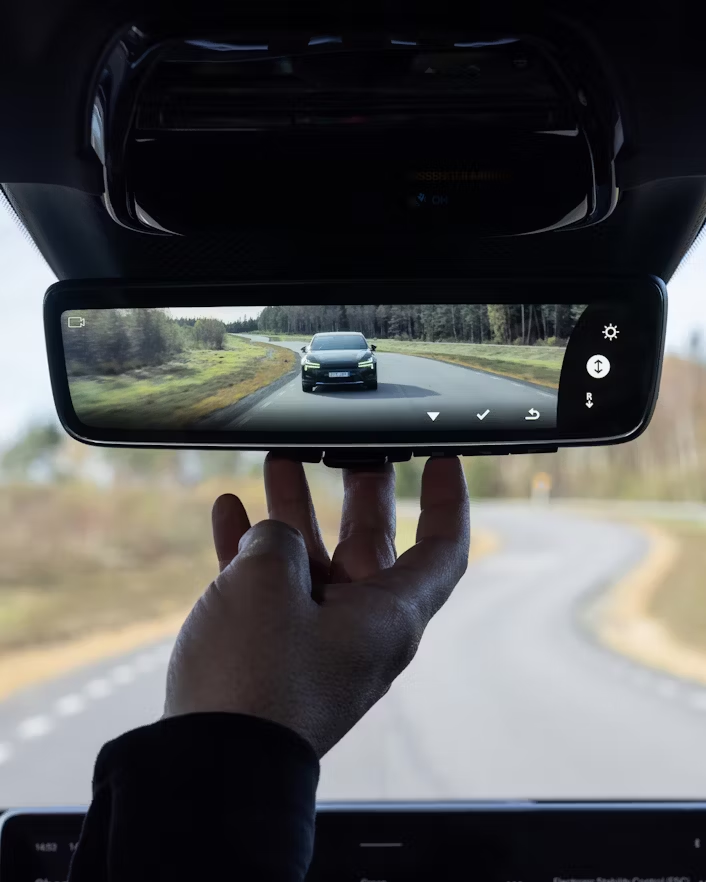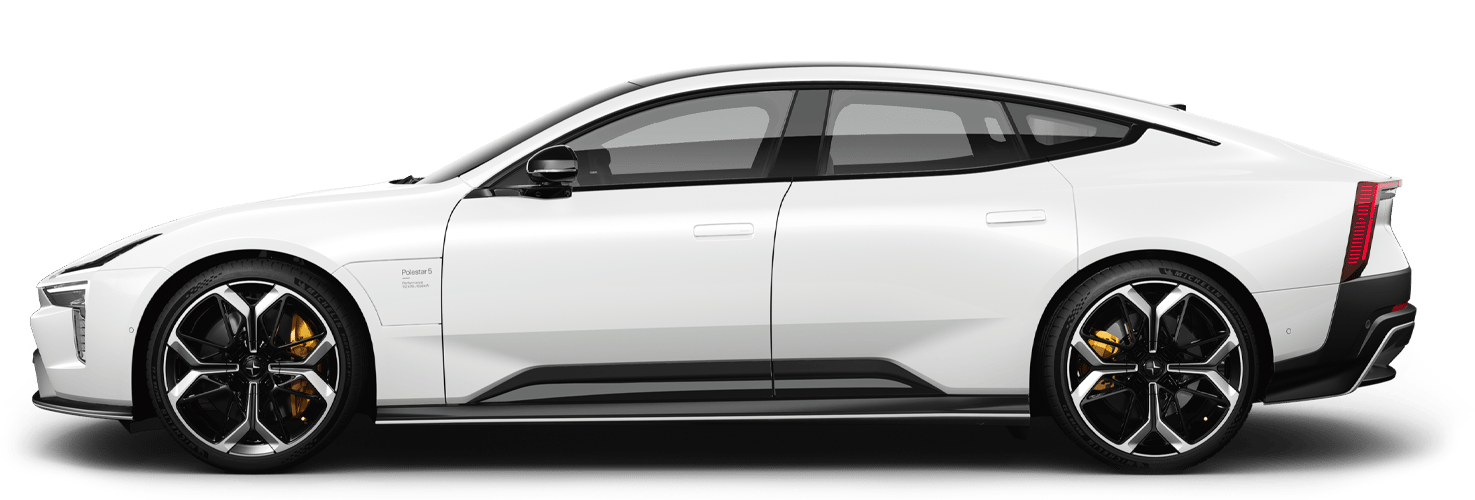Polestar 4 has a new digital rearview mirror: Here's what that means
First seen on American racetracks at the turn of the 20th century, the traditional rearview mirror has been a mainstay in car design for the best part of 100 years. But more than a century after its introduction, little has changed. Until now. The rise of digital rearview mirrors has enabled car designers to upend a century of automotive history. And being the innovative design brand that we are, we’ve pushed the envelope even further. Don’t believe us? See for yourself.
It's been a long time since Ray Harroun first introduced the rearview mirror to the world. At the inaugural Indianapolis 500 race in 1911, Ray's unconventional design allowed him to see what was happening on the track without the need for a riding mechanic (the norm at the time). The ability to race without the additional weight of a passenger proved invaluable, and Ray went on to win the race. At the time, his custom-built yellow Marmon “wasp” was a triumph of design and technological innovation. But that was then.
When Polestar 4 was first unveiled at the 2023 Shanghai International Automobile Industry Exhibition, one feature in particular stood out. An innovative design featuring a rear-facing camera and a pixel-perfect HD display resulted in one of the most significant changes in automotive design in recent years: the rear window was no more. Gone. Done. Finito.
The feature was an instant hit, capturing the imagination of the world’s leading press and launching a thousand column inches (“Polestar makes the rear window obsolete with its new crossover combo”, “The Polestar 4 replaces a rear window with a hi-def screen”, and “Why electric cars of the future will have no rear window”).
But there’s a lot more to this than just snappy headlines.


This isn’t a gimmick. There are genuine motivations for taking this decision
Toggle between HD digital display and traditional mirror
Initially showcased in Polestar Precept, this feature was introduced earlier thanks to technological advancements. A 2.5-megapixel camera with an impressive 121-degree field of view provides real-time information to the cabin's 8.9″ HD display. So far, so good. But what if the driver wants to see what's happening in the rear of the vehicle? Well, a simple toggle mode turns the HD display into a standard rearview mirror – keeping all boisterous children under the watchful supervision of parents in front.
“This isn’t a gimmick. There are genuine motivations for taking this decision. Firstly, we are able to provide an improved line of sight for the driver. The rear camera provides a much clearer picture of what’s going on behind the vehicle. This is also true for conditions that are usually problematic for the driver, such as when the light isn’t great or if it’s raining. The clarity is exceptional. Secondly, not having a rear window really opens up the space for passengers. In the back of the car, it’s a completely different experience now - think business class meets executive lounge,” says Ola Aldensjö, Polestar 4 Product Manager.
It's this combination of improved safety (that comes from increased driver visibility via the real-time feed from an external camera) and increased comfort (a result of a more immersive and luxurious backseat experience) that lies at the heart of this automotive leap. This isn’t just innovation for the sake of innovation. It's about using technology to bring about meaningful change. And in that way, this departure from the past somewhat resembles those racers of the early 20th century.
So, here’s to Ray. Your legacy is in good hands.








01/04







